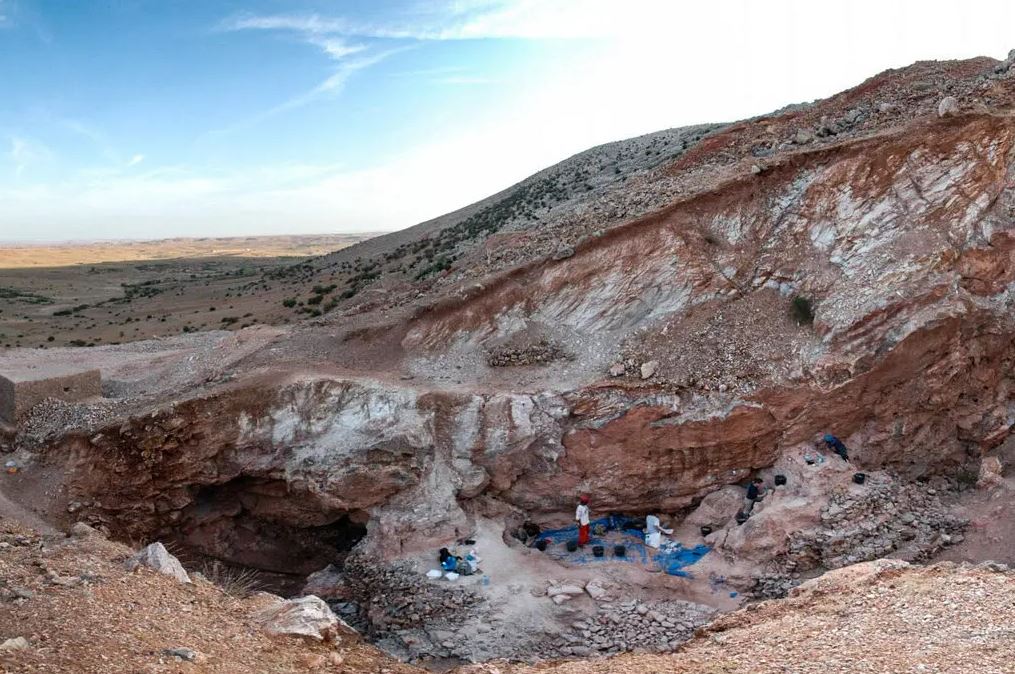Rejecting the long-held theory that modern humans evolved from a single site in Africa at a single time, scientists have discovered a surprisingly complicated genesis of our species.
Researchers analysed the DNA of 290 individuals and came to the conclusion that modern humans originated from two groups that shared Africa a million years ago before combining in several, geographically distinct occurrences. On Wednesday, Nature published the results.
Eleanor Scerri, a biological archaeologist at the Max Plank Institute for Geoarchaeology in Jena in Germany, Germany who was not involved in the current research, stated, “There is no single birthplace.” “That pretty much kills that theory once and for all.”
Researchers in the fields of paleoanthropology and genetics have uncovered evidence that Africa was the birthplace of Homo sapiens. Possible modern human fossils going back as far as 300,000 years have been discovered there. The first stone tools used by our forefathers were, too.
The genetic blueprint of humans also leads to Africa. Genetic diversity among contemporary Africans is quite high. This is because it took thousands of years for humans to develop in Africa before tiny groups, carrying relatively limited gene pools, started migrating to other continents.
Researchers have identified many locations throughout Africa as the possible birthplace of humanity. The discovery of hominin fossils in Ethiopia prompted a shift in focus to East Africa. However, there were extant tribes in South Africa that exhibited extremely distant kinship to other Africans. This raised the possibility that humans had a long history in the region.
Geneticist Brenna Henn and her colleagues at the University of California, Davis, created a programme to model human history on a massive scale. Researchers modelled many hypothetical African population structures throughout several time periods to see which would have been able to generate the genetic variation seen in modern humans.
The question of “what kinds of models are really plausible for the African continent” was raised by Dr. Henn.
Researchers looked examined DNA from a wide variety of African peoples, including farmers from Sierra Leone in West Africa (the Mende), hunters and gatherers from Ethiopia (the Gumuz), farmers from Ethiopia (the Amhara), and hunters and gatherers from South Africa (the Nama).
DNA from these Africans was matched to the genome of a European from the United Kingdom. The genome of a Neandertal discovered in Croatia was also analysed. Evidence from the past pointed to a common ancestor between contemporary humans and Neanderthals about 600,000 years ago. The Neanderthals spread over Asia and Europe, mated with early modern humans from Africa, and eventually became extinct some 40 thousand years ago.
The study’s authors found that our species’ progenitors split into two groups at least a million years ago. Stem1 and Stem2 are the names given by Dr. Henn and her team.
A subset of humans, called Neanderthals, diverged from Stem1 some 600,000 years ago. While Stem2 eventually died out in Africa, Stem1 lingered there for tens of thousands of years.
There would be far more genetic differences between Stem1 and Stem2 if they had evolved in isolation from one another. Instead, Dr. Henn and her team discovered that there was only a minimal maintenance of differences between them and modern-day Europeans and West Africans. The researchers found that mating and offspring production between Stem1 and Stem2 populations had occurred, resulting in genetic diversity.
The model does not provide light on the specific African locations of the Stem1 and Stem2 populations. It’s also plausible that these two peoples’ populations shifted and migrated extensively throughout the continent during the centuries they were there. The model suggests a major turning point in Africa’s history occurred about 120,000 years ago.
Humans from Stem1 and Stem2 mated in southern Africa, creating a new branch that eventually gave birth to the Nama and other modern humans in the area. Separate Stem1 and Stem2 group fusions occurred in other parts of Africa. The resulting genetic pool gave birth to the current populations of West and East Africa as well as the migrants who spread outside the continent.
Climate change may have prompted the merging of the Stem1 and Stem2 populations by bringing them together in the same geographical areas. For instance, when sea levels rose, some tribes of hunter-gatherers may have been forced to relocate away from the shore. Some parts of Africa became desert, forcing people to look for other places to live.
People with just Stem1 or only Stem2 ancestry seem to have persisted after these mergers 120,000 years ago. Mende DNA revealed recent hybridization with Stem2 populations, dating back just 25,000 years. Dr. Henn speculates that Stem2 was located in West Africa.
To investigate whether the models change, she and her team are now including additional genomes from individuals in various areas of Africa.
Some of these groups may have persisted in Africa for tens of thousands of years, eventually contributing to the development of our modern species.
Dr. Scerri hypothesised that modern humans may have persisted after the extinction of Neanderthals because they lived in a network of mixing groups throughout Africa. This set-up allowed our predecessors to preserve greater genetic variety, which might have aided in their ability to adjust to climatic change.
Dr. Scerri hypothesised that the rich genetic variety at the foundation of our species was ultimately the driving force behind its remarkable success.

